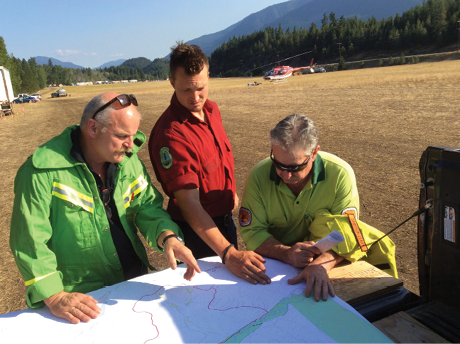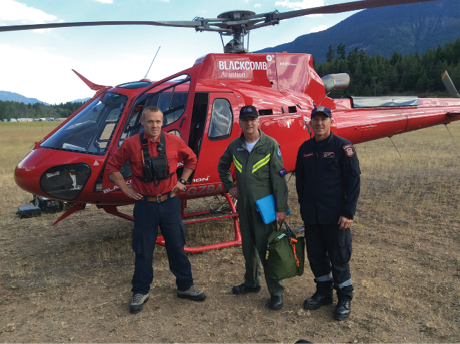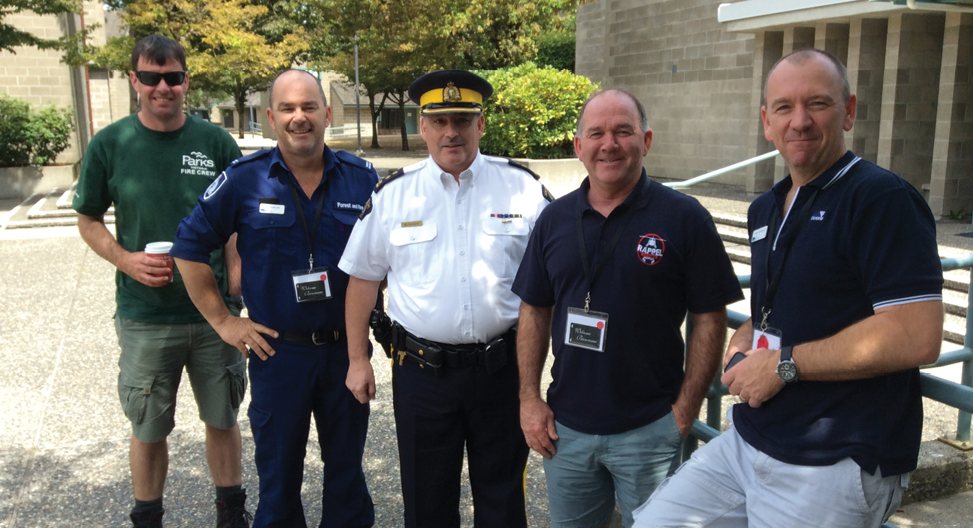Notes from the Field: Building cross-cultural disaster resilience: Australia assists with wildfires in Canada
AEMI
Article
In July 2015 Emergency Management Victoria (EMV) led a 102-person national deployment of personnel to support the British Columbia province of Canada to control the escalating wildfires in the region. Crews from Victoria, New South Wales, Western Australia, Australian Capital Territory, Tasmania, Queensland, and South Australia were involved in the national deployment. The team was intended to fulfill specialist leadership roles in incident management and aircraft support among others.
The relationship between British Columbia and Australia in sharing firefighting resources has been in place for over 15 years. This agreement allows for the exchange of personnel, knowledge, skills, equipment, technology and mutual support in the event of wildfire disasters. This relationship was strengthened when firefighting personnel from British Columbia were sent to Australia in 2007 and 2009 to help during the bushfire season in Australia.
Australia is a country known for its skilled firefighters and emergency management personnel with expertise in operating specialist equipment and being able to work with international partners. This year the Australian crews in Canada battled more than 5000 wildfires, where more than three million hectares were burnt; more than double the land area affected by fires in 2014.
Darrin McKenzie, Deputy Chief Fire Officer, Department of Environment, Land, Water and Planning in Victoria was Senior Liaison Officer in Winnipeg, Manitoba. He was responsible for the deployment of personnel from Australia on behalf of EMV. Darrin also oversaw operations in Edmonton in the province of Alberta and British Columbia.

Alistair Drayton (left), Incident Controller, conducts a fire briefing for local firefighters. Image: Darrin McKenzie.
‘Australia and Canada have a lot in common as far as fires go. We both experience large bush and wildfires that can have quite an impact on communities and property. Similar to Canada, our fires can grow large very quickly with significant risks and consequences. This is why we can integrate so well by sharing experiences and, when it comes down to it, resources and personnel,’ he said.
Initially a request came from the Canadian Interagency Forest Fire Centre (CIFFC) to Emergency Management Victoria (EMV) for the deployment of International Deployment Liaison Officers to co-ordinate the operation.
Traditionally the CIFFC measure a fire warning from one to five. When the warning reaches level four a call is made to International Deployment Officers to start co-ordinating personnel. Initially officers are sent from Victoria and South Australia. Once these officers assess the situation, they then request further personnel to be sent.
Deputy Chief Fire Officer McKenzie continued, ‘The initial request from Canada came through to EMV. EMV then passed the information on to Emergency Management Australia (EMA). EMA then led a discussion with the states and territories around recruiting personnel to go to Canada. Then EMV offered to do the co-ordination role on behalf of Australia. Given that EMV had prior experience in co-ordinating overseas deployments to Canada, most notably in 2014, the other states and territories were comfortable with this plan,’ Deputy Chief Fire Officer McKenzie said.
A range of established agreements are in place supporting the international deployment of people to fight fires in Australia and Canada. The 2014 Australian deployment to Canada occurred through an agreement between the Department of Environment, Land, Water and Planning in Victoria and British Columbia.

Ian Westhorpe (centre), Air Attack Supervisor, with local aircrew. Image: Darrin McKenzie.
Roughly 20 per cent of those deployed have been on previous overseas engagements. For the majority of those sent this was their first time to assist in an international engagement. The 80 per cent first-timers gained experience in leadership development.
‘All Australian agencies had quite a thorough selection process vetting professionals within the field. People were selected depending on their having the right skills and the right attitude to match this deployment.
‘All those who go need to be self-reliant, be able to manage their own welfare and hit the ground running. Learning new terminology and procedural processes were among the hardest challenges for those deployed. It was also about understanding and working in a new environment. There were new fuel types, different terrain and different weather patterns that played a huge part in our adapting.
‘While there are a lot of similarities to firefighting in Australia, there are still quite a lot of differences in terms of fire behaviour. It took a little bit of time for our firefighters to get comfortable with these differences,’ Deputy Chief Fire Officer McKenzie said.
The engagement between Canada and Australia also extends to similarities in national strategies to build disaster resilience in communities. Canada’s National Disaster Mitigation Strategy aligns closely with the Australian National Strategy for Disaster Resilience.
‘The two countries strategies were able to integrate well because there is a clear understanding of how to approach emergency management issues, what the risks and consequences are, and in building disaster resilience within the community. Similar to Australia, Canada also has warning systems, prepares communities and works at the local level to make sure communities are resilient and that fire plans are in place as part of the strategy.
‘It’s also about building trust. Canada and Australia have a lot of mutual trust in working together after 15 years of fighting fires. This naturally builds on the international relationships and the sharing of knowledge and information and how to approach fire issues differently. The more collaboration, the more we talk and work through issues together, the more we can learn and work collectively,’ Deputy Chief Fire Officer McKenzie said.
Learning opportunities from inter-country deployments is a great benefit for those involved. Among the skills learned in a different country were those relating to new fire line strategies, the use of aviation and informing communities, as well as understanding the Canadian National Disaster Mitigation Strategy and seeing how that is being implemented at the community level.
‘For the two countries there is potential to work together in developing and sharing the lessons learned on the operational level to build and develop future resilience policy strategically. There was one guy from Australia posted at Edmonton who worked for four weeks just on strategic planning. This is a great opportunity for us to learn from each other and look to the future,’ Deputy Chief Fire Officer McKenzie said.
A number of international firefighters worked alongside Canadians to battle the recent fires. This was the first time Canada welcomed resources from a large number of countries including Mexico, the U.S.A., South Africa and New Zealand. Collaboration and dialogue in cross-cultural fire management continues to build disaster management resilience worldwide.

Victorian firefighters at the Royal Canadian Mounted Police training facility in Chilliwack. Image: Darrin McKenzie.


